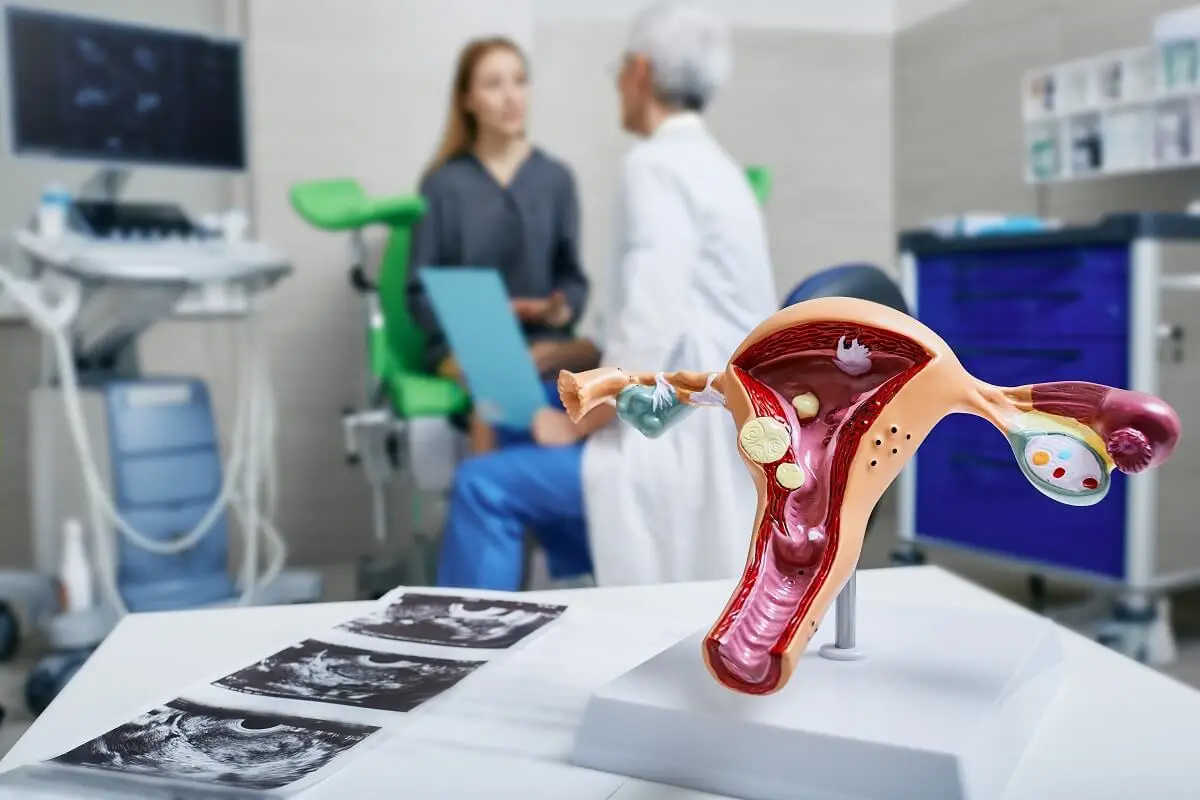What Is Uterine Curettage and When Is It Performed?


Written and verified by the doctor Mariel Mendoza
Uterine curettage, also known as dilation curettage, is a minimally invasive procedure in which a lesion is induced in the inner layer of the uterus (endometrium) with the objective of promoting its regeneration to increase its receptivity during the embryo implantation process.
It’s one of the procedures used in assisted reproduction for women who don’t get pregnant because of repeated failures during implantation. Even so, it isn’t free of side effects and its benefits are still being discussed. Let us see in detail what it consists of.
When is endometrial curettage recommended?
Currently, endometrial curettage is recommended in women who have undergone at least two cycles of in vitro fertilization and have suffered repeated implantation failures. That is, despite having good quality embryos, the embryo transfer process has failed.
It’s possible that the problem has to do with the communication between the embryo and the uterus, as no abnormalities are detected in the eggs or sperm.

Another great article for you: What Is In Vitro Fertilization?
Uterine curettage procedure
During uterine curettage, a slight lesion or ‘scraping’ is made in the mucous layer that lines the inside of the uterus, that is, the endometrium. This is where the embryo is implanted. The procedure is safe, simple and doesn’t take more than half an hour.
It’s usually performed in a gynecological consultation by means of an endometrial biopsy, or through a hysteroscopy when a more thorough visualization of the uterine structure is required to rule out possible causes of failure in embryo implantation.
In the process, a flexible catheter 3 millimeters thick is introduced through the hole in the cervix to scrape the endometrium. This is similar to the one used for embryo implantation.
When performed by hysteroscopy, the inside of the uterus can be visualized. In this case, an endoscope is introduced that allows you not only to scrape the walls, but also, through its camera, to look for polyps, adhesions, or anatomical malformations.
When should it be scheduled?
The recommendation is to perform uterine curettage in the middle of the luteal phase of the cycle that precedes embryo transfer. That is, around day 21 of the menstrual cycle in a regular woman or one week before the probable date of onset of menstruation of the cycle in which the embryo transfer is planned.
The embryo transfer can be of embryos fertilized with an egg and a sperm from the couple or by embryo donation.
What should be taken into account at the end of the procedure?
Once the intervention is finished, the recommendation is to avoid having sexual intercourse the same night. In addition, the use of tampons or menstrual cups should be avoided during the bleeding following the procedure.
Read also: What Is Embryo Adoption and What Are its Advantages?
How does uterine curettage work?
The mechanism by which uterine curettage increases the chances of embryo implantation is still unclear. However, it’s suggested that inducing an injury to the endometrium triggers an inflammatory response that promotes tissue regeneration, which improves the connection between the endometrium and the embryo.
This reaction triggers the release of growth factors, different chemicals, and some hormones that promote epithelial repair. In addition, it’s believed that it can activate genes responsible for implantation.
Adverse effects of the intervention
Endometrial curettage, being a minimally invasive technique, is considered safe. In general, it has very few adverse effects. Slight bleeding after the procedure is common, as well as abdominal cramps similar to those experienced during menstruation.
On the other hand, in very rare cases, infection of the pelvic area or incidental uterine perforation may occur. The most important thing is to rule out pregnancy by searching for the gestational sac by transvaginal ultrasound, as a uterine curettage would result in miscarriage if pregnant.
Controversies about the intervention
In 2021, a review of multiple studies was published on the Cochrane Library website, in which the authors concluded that there’s insufficient evidence to support the use of uterine curettage as a method to increase the clinical pregnancy rate.
Therefore, it isn’t recommended for it to be routinely offered to women who are going to undergo the in vitro fertilization procedure.
There’s insufficient evidence to show that there’s a statistically significant difference in clinical pregnancy rate and birth rate increases when used.
Over the years it has been suggested that it may increase embryo implantation. However, its effectiveness has been determined only in the rates of women with previous implantation failure.
However, as a minimally invasive, safe and inexpensive procedure, it’s still considered an option, especially in couples in developing countries, or after two or more failed IVF attempts.

Further study of the effects of its use is necessary to determine its true benefit.
What to remember?
Right now, assisted reproduction options are varied and can be tailored to individual needs. That is why, before opting for uterine curettage, it’s a good idea to research its benefits and disadvantages. Ideally, all questions should be answered by a gynecological expert.
All cited sources were thoroughly reviewed by our team to ensure their quality, reliability, currency, and validity. The bibliography of this article was considered reliable and of academic or scientific accuracy.
- Günther V, von Otte S, Maass N, Alkatout I. Endometrial “Scratching” An update and overview of current research. J Turk Ger Gynecol Assoc. 2020 Jun 8;21(2):124-129. doi: 10.4274/jtgga.galenos.2020.2019.0175. PMID: 32517438; PMCID: PMC7294834.
- Bar G, Harlev A, Alfayumi-Zeadna S, et al. (2020). Recurrent implantation failure: which patients benefit from endometrial scratching prior to IVF?. Arch Gynecol Obstet 301, 817–822. https://doi.org/10.1007/s00404-019-05424-1.
- Lensen S, Armstrong S, Gibreel A, Nastri C, Raine-Fenning N. Martins W. (2021). Lesión endometrial en mujeres sometidas a fecundación in vitro (FIV). Cochrane Database of Systematic Reviews. https://www.cochranelibrary.com/cdsr/doi/10.1002/14651858.CD009517.pub4/full/es#CD009517-abs-0016
- Lensen S, et al. (2019). A Randomized Trial of Endometrial Scratching before In Vitro Fertilization. N Engl J Med 380, 4. https://www.nejm.org/doi/pdf/10.1056/NEJMoa1808737?articleTools=true..
- Shoham G, Alexandroni H, Leong M, Shulman A, Weissman A. (2022). Use of Endometrial Scratching in IVF/IUI – A Worldwide Opinion and Clinical Practice Survey. Clin. Exp. Obstet. Gynecol 45(5), 108. https://repository.unar.ac.id/jspui/bitstream/123456789/2828/1/2709-0094-49-5-108.pdf.
- Gnainsky Y, Granot I, Aldo PB, Barash A, Or Y, Schechtman E, Mor G, Dekel N. Local injury of the endometrium induces an inflammatory response that promotes successful implantation. Fertil Steril. 2010 Nov;94(6):2030-6. doi: 10.1016/j.fertnstert.2010.02.022. Epub 2010 Mar 24. PMID: 20338560; PMCID: PMC3025806.
This text is provided for informational purposes only and does not replace consultation with a professional. If in doubt, consult your specialist.








